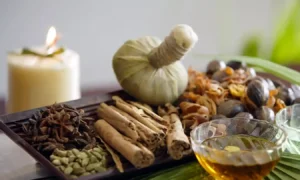How can a balance between work and personal life be maintained? Achieving Work-Life Balance: Nurturing Harmony in a Busy World Strategies for Cultivating Equilibrium Between Professional and Personal Life In today’s fast-paced world, finding a balance between work and personal life has become increasingly challenging yet essential for overall well-being. Work-life balance refers to the equilibrium between the demands of one’s professional responsibilities and the fulfillment of personal needs, including relationships, hobbies, and self-care. Achieving this balance is crucial for maintaining physical health, mental well-being, and a sense of fulfillment in both spheres of life. Just as a tightrope walker navigates the thin line between stability and risk with precision and grace, individuals strive to maintain equilibrium between work and personal life amidst the demands of modern living. Like a delicate dance, finding balance requires awareness, intentionality, and adaptability, as each step forward brings us closer to a life of harmony and fulfillment. Just as a gardener tends to both flowers and vegetables to create a diverse and abundant garden, individuals nurture both professional aspirations and personal passions to cultivate a rich and fulfilling life. Research published in the Journal of Occupational and Environmental Medicine suggests that employees who experience better work-life balance report higher levels of job satisfaction, lower stress levels, and improved physical health (van der Hulst & Geurts, 2001). This underscores the importance of finding harmony between work and personal life for overall well-being and productivity. “Happiness is not having what you want, but wanting what you have.” “The key to happiness is not achieving more, but feeling good about what we already have.” Establish clear boundaries between work and personal time, including designated periods for relaxation, recreation, and socializing. Prioritize self-care activities such as exercise, meditation, and hobbies to recharge and rejuvenate outside of work hours. Communicate openly with employers and colleagues about workload, deadlines, and the importance of maintaining work-life balance. “Life is what happens when you’re busy making other plans.” John Lennon “The greatest wealth is the richness of the soul.” Prophet Muhammad Sources: Link: https://doi.org/10.1097/00043764-200107000-00009 While global habits may include overwork, constant connectivity, and neglect of personal well-being, scientific proposals for work-life balance emphasize the importance of setting boundaries, prioritizing self-care, and fostering open communication in the workplace. While societal norms may glorify busyness and productivity, scientific research highlights the detrimental effects of chronic stress and burnout on physical and mental health, underscoring the need for a more balanced approach to life. In the tapestry of life, achieving work-life balance is the thread that weaves together moments of fulfillment, joy, and meaning. By nurturing harmony between professional responsibilities and personal aspirations, we embark on a journey towards greater well-being, resilience, and satisfaction. Let us heed the wisdom of ancient philosophies and modern science, knowing that the path to balance begins with a single step, and each choice we make brings us closer to a life of harmony and fulfillment. What habits promote health and well-being? Cultivating Healthy Habits: Pathways to Wellness and Well-being Strategies for Nurturing Physical and Mental Health Promoting health and well-being requires the cultivation of positive habits that support both physical vitality and emotional resilience. These habits encompass various aspects of daily life, including nutrition, exercise, sleep, stress management, and social connection. By adopting and prioritizing these habits, individuals can enhance their overall quality of life, boost immunity, reduce the risk of chronic diseases, and cultivate a sense of balance and fulfillment. Just as a gardener tends to a garden with care, nurturing the soil, watering the plants, and removing weeds to ensure healthy growth, individuals must tend to their well-being by cultivating positive habits that support physical and mental health. Like the branches of a tree reaching towards the sky, these habits extend into every aspect of life, influencing energy levels, mood, and overall vitality. Just as a compass guides a traveler through unfamiliar terrain, healthy habits provide direction and stability on the journey towards optimal well-being. Research published in the American Journal of Clinical Nutrition suggests that adherence to a healthy diet, characterized by high intake of fruits, vegetables, whole grains, and lean proteins, is associated with a reduced risk of chronic diseases such as cardiovascular disease, diabetes, and certain cancers (Hosseini et al., 2017). This highlights the profound impact of dietary habits on long-term health and well-being. “Take care of your body. It’s the only place you have to live.” Jim Rohn “The groundwork for all happiness is good health.” Leigh Hunt Prioritize regular physical activity, aiming for at least 150 minutes of moderate-intensity exercise per week. Embrace a balanced and varied diet rich in fruits, vegetables, whole grains, and lean proteins to nourish the body and support optimal health. Practice stress management techniques such as mindfulness meditation, deep breathing exercises, or journaling to reduce stress and promote emotional well-being. “Health is the greatest gift, contentment the greatest wealth, faithfulness the best relationship.” Buddha “The greatest wealth is health.” Virgil Sources: Link: https://doi.org/10.3945/ajcn.116.142521 While global habits may include sedentary lifestyles, consumption of processed foods, and neglect of mental health, scientific proposals for health and well-being emphasize the importance of regular exercise, balanced nutrition, and stress management. While societal norms may prioritize productivity over self-care, scientific research underscores the profound impact of holistic well-being on overall quality of life, productivity, and longevity. In the journey of life, cultivating healthy habits is the compass that guides us towards vitality, resilience, and fulfillment. By prioritizing regular physical activity, nourishing our bodies with wholesome foods, and nurturing our minds with mindfulness and self-care, we embark on a path towards optimal health and well-being. Let us heed the wisdom of ancient traditions and modern science, knowing that the choices we make today shape the quality of our lives tomorrow. Embrace the power of positive habits, and step into a future filled with vitality, joy, and abundance. What is the importance of nutrition in personal well-being? Nourishing Wellness The Significance of Nutrition in Personal Well-being Understanding the Impact of Dietary Choices on













